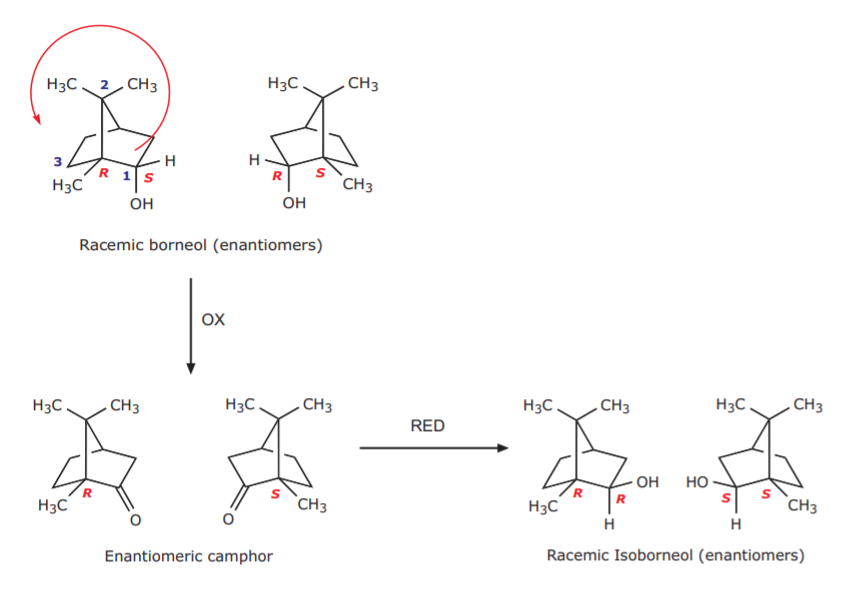7.3: Stereochemistry of the Reaction
- Page ID
- 213808
The diagram at the bottom of p. 290 shows the stereochemical detail of the mechanism of the reactions. It is important to understand the meaning of the endo and exo terminology. This terminology is used in reference to bicyclic systems such as the norbornane molecule shown below. The rigidity of these systems makes hydrogens (a) and (b) stereochemically nonequivalent. The exo hydrogen points outward from the ring, and the endo hydrogen points downward, opposite to the bridge, as shown.

If we apply this terminology to the alcohols borneol and isoborneol, we can see that they are not interconvertible, and therefore they are isomers. What kind of isomers are they? The fact that the carbon bearing the hydroxyl group is chiral, and that there are other chiral centers in each of these molecules, makes these alcohols diastereomers. An instance showing some of these chiral centers (but not all, for clarity) is seen below.

The next question is, since the starting material (borneol) can exist as a racemic mixture (see below), is it being used as such in the lab, or is it a pure enantiomer? The answer is easy. Pure enantiomers are expensive and difficult to prepare. Therefore, the reagent used in the lab is a racemic mixture. As extra information, the configuration assignment for one of the carbons is also shown.

Now, how does the presence of enantiomers in the starting material affect the final outcome of these conversions? Each step of the reaction effect the same conversion on both enantiomers, therefore, each product from each step is obtained as an enantiomeric mixture, including the final product.



